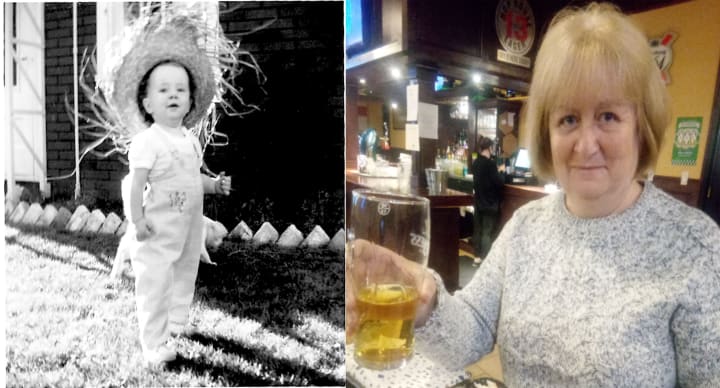Reflect - Focus - Shine
"Masterpiece Of A Lifetime"

The Key To Success
Before I ever take a photo, I start by learning different techniques (reading and searching the internet) , also making the photo a challenge.
An example is my passion for nature. When I am hiking the trails along the Grand River I am always aware of what is around (using quiet techniques and binoculars). Capturing one simple photo can become the “everlasting memories”.
Techniques
From a simple small cannon camera (digital) to my Samsung LG40 phone, I have been able to take photos that are so unique and have also been given awards.
With this being said I would like to share with you a few ideas that I use.
- Always be prepared and take a camera bag along with you, even leave it in the trunk. You never know when that moment to take a picture will happen.
Today for example I was coming along the road and there was a beautiful hawk, this time I took the phone and now in the process of editing it. “Pure Beauty”.
- I actually really love my cannon camera (digital) and have had it for several years. The opportunity to uploading the photos to my computer and perfecting it is amazing.
Once uploaded these are the steps I use to creating my ‘Work Of Art”
- making images that are visually beautiful can take some hard work and time
- choosing your editing tools is very important and making sure they are the ones you know you will really want to use. (Choose the right editing tools that best suit you).
-everyone is so use to carry our phones everywhere, we can edit the photo right on the phone. So I am going to start editing with you step by step from my phone.
* Start with a great photo - take extras just to be safe
*While taking the photo watch for indirect daylight coming in, overhead lighting (with or without flash) , there are times the lighting actually perfects the photo and other times it doesn’t. I take it with and without to give myself a general pick.
*Now once on the phone or the computer I select edit.
-Now making sure the photo is straighten, I press the square box and work with the picture using my hands to make it just the way I like it.
- Now if you like the original picture you can keep that or you have an opportunity of changing with dynamics. From cool to vivid to warm or even black and white.
- Now I press what I call the sun/moon with little dials around it. I first hit the magic wand on the right side and start to decide how dark I would like the picture or how light.( or maybe even a contrast of the two)
- Now below is an exposure button, moving it up and down the scale it shows you if you want to bring in the photo or make it look like it is further away. There is a percentage of 100% to direct you either way.
- Brilliance - the next button, perfect your photo to make it look the best. Rolling the slider at the side you can fix things very quickly.
- Highlights - the button directly below. Enhancing that appeal of what makes the photo just shine. Sliding up or down you can make amazing decisions.
-Shadows (Our next button)- Sliding up or down you can make them appear bigger/smaller, or make them disappear.
-Saturation - I find this button is much like the Brilliance button, it does intensify the photo and make it look more professional.
The editing from a phone or from the computer is set up easy, but to really bring your photo to life can take time. Looking very carefully at every technique possible helps to make your photo belong to you “The Creator”
T

The Dark Room
During my years of growing up and using a small brownie camera, I had the opportunity alongside a professional photographer who took me through the process.
My brownie camera would take photos on a film which was made of plastic. After the roll of film had been used up, we cut each individual picture so we could separate them.(these are called negatives)
The negatives are than used to project the photo and stored on photographic paper.
Due to the fact that photographic paper reflects to light, they are processed in a very dark room.
Now this is where the name “Dark Room” came into play. While in the dark room, using a red light allowing photographers to control light sensitivity.(trying not to over expose the picture)
Now when you are ready you go to an area where the negative is carefully put into water. (lots of it and both hot and cold). I remember he used a thermometer. (it had to be a perfect temperature), I believe he also added some type of fixer liquid as well.
Now this is interesting because from this point, I remember a smile on his face and using tweezers and he carefully hung the pictures to dry. (today you can find that individual filming movies)
- The Art Of Photography- Has Come A Long Way
From the darkest of rooms to anywhere you want to be, we have come a very long way
For fun look at the old pictures of yesterday past. Compare them to the ones we take now and you will really see the difference.

After my parents past,
I was sad to never see them again.
Now sitting daily,
I am so blessed for photography,
they are memories that truly last.
About the Creator
Cathy Deslippe
Catherine Deslippe
At the age of 7, I became an author. I am an international writer with many authors; all royalties went to cancer patients without insurance. I used to write to cope, but now I write to bring others hope.






Comments
There are no comments for this story
Be the first to respond and start the conversation.